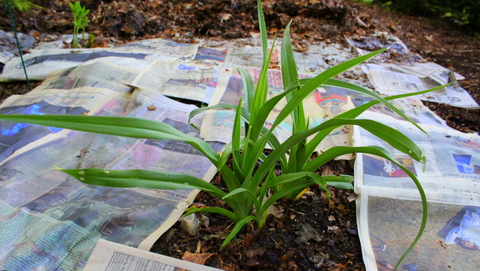Introduction
In the world of gardening, maintaining a healthy balance between pests and plants is crucial for achieving bountiful harvests. Integrated Pest Management (IPM) offers a comprehensive approach that minimizes the use of harmful chemicals while effectively managing pest populations. Let's delve into the world of IPM and discover how it can revolutionize your gardening experience. The following content also has some reference value for raised garden beds.

Understanding Garden Pests
Common garden pests
Garden pests come in various shapes and sizes, from tiny aphids to voracious caterpillars. Understanding the common pests in your area is the first step toward effective pest management.
Identifying pest damage
Recognizing the signs of pest damage is essential for early intervention. Look out for chewed leaves, stippling, wilting, or unusual discoloration on your plants.
Impact of pests on garden health
Pests can wreak havoc on your garden, causing stunted growth, reduced yields, and even plant death. Left unchecked, pest infestations can spiral out of control, leading to significant losses.
Principles of Integrated Pest Management
Prevention
● Cultural practices: Implementing cultural practices such as crop rotation, proper spacing, and soil management can help deter pests and reduce the risk of infestation.
● Crop selection: Choosing pest-resistant varieties and diversifying your crops can minimize the likelihood of widespread pest damage.
● Proper planting techniques: Planting at the right time and in the right conditions can strengthen plants' natural defenses against pests.
Monitoring
● Regular inspections: Routinely inspect your garden for signs of pest activity, such as chewed leaves, egg masses, or insect trails.
● Pest identification: Identifying the specific pests infesting your garden is crucial for selecting appropriate control measures.
Control
● Biological control methods: Introducing natural predators, such as ladybugs or predatory nematodes, can help keep pest populations in check.
● Mechanical control methods: Handpicking pests, using barriers like row covers, or installing physical traps can provide effective control without resorting to chemicals.
● Chemical control methods (as a last resort): If other methods fail, consider using chemical pesticides sparingly and judiciously, taking care to minimize harm to beneficial insects and the environment.
Evaluation
● Effectiveness of control methods: Regularly assess the effectiveness of your pest management strategies and make adjustments as needed.
● Environmental impact: Consider the ecological consequences of your pest control practices and strive to minimize negative impacts on the environment.
Implementing IPM in Your Garden
Planning your garden layout
Carefully plan your garden layout to optimize plant placement, maximize sunlight exposure, and minimize pest vulnerabilities.
Selecting pest-resistant plants
Choose plant varieties known for their resistance to common pests in your area to reduce the need for chemical interventions.
Attracting beneficial insects
Create habitat and food sources for beneficial insects such as ladybugs, lacewings, and parasitic wasps to naturally control pest populations.

Using barriers and traps
Deploy physical barriers like row covers or sticky traps to prevent pests from reaching your plants or monitor their activity.
Maintaining proper garden hygiene
Regularly remove debris, weeds, and diseased plants from your garden to eliminate potential hiding places and breeding grounds for pests.
Natural Predators: Your Garden's Allies
Introduction to beneficial insects
Beneficial insects are nature's pest control agents, preying on harmful pests and helping to maintain ecological balance in your garden.
Common beneficial insects and their prey
Ladybugs feast on aphids, while parasitic wasps lay their eggs inside caterpillars, effectively eliminating pest populations.
Attracting and supporting beneficial insects
Planting nectar-rich flowers, installing insect hotels, and avoiding broad-spectrum pesticides can attract and sustain populations of beneficial insects in your garden.
Companion Planting for Pest Management
Definition of companion planting
Companion planting involves growing certain plants together to enhance pest control, nutrient uptake, and overall plant health.
Examples of companion plants for pest control
Planting aromatic herbs like basil and rosemary alongside susceptible crops can repel pests and mask their scent, reducing the risk of infestation.
Tips for successful companion planting
Research compatible plant combinations, consider each plant's growth habits and preferences, and experiment with different pairings to find what works best for your garden.
Organic Pest Control Methods
Introduction to organic pest control
Organic pest control methods prioritize natural solutions over synthetic chemicals, minimizing harm to the environment and beneficial organisms.
Homemade pest control remedies
Garlic spray, neem oil, and diatomaceous earth are just a few examples of homemade remedies that can effectively deter pests without harmful side effects.
Organic insecticides and repellents
Products containing botanical extracts such as pyrethrin or spinosad offer organic alternatives to conventional pesticides, targeting specific pests while sparing beneficial insects.
Integrated Weed Management
Importance of weed control in IPM
Weeds compete with cultivated plants for resources and can provide refuge and food for pests, making weed management essential for maintaining a healthy garden ecosystem.
Methods for controlling weeds naturally
Mulching, hand weeding, and using cover crops are effective strategies for suppressing weed growth and improving soil health without resorting to herbicides.

Mulching as a weed control strategy
Applying mulch to garden beds helps suppress weed growth, retain soil moisture, and regulate soil temperature, creating a healthier environment for your plants.
Sustainable Pest Management Practices
Conserving natural habitats
Preserving natural habitats and biodiversity in and around your garden can provide refuge for beneficial organisms and help maintain ecological balance.
Using environmentally friendly products
Choose organic and eco-friendly pest control products whenever possible to minimize harm to the environment and beneficial organisms.
Reducing reliance on synthetic pesticides
By implementing diverse pest management strategies and practicing good cultural practices, you can reduce the need for synthetic pesticides and promote long-term garden health.
Overcoming Challenges in IPM
Dealing with persistent pests
Some pests may prove challenging to control, requiring persistence, experimentation, and adaptation of control strategies to effectively manage their populations.
Weather-related challenges
Extreme weather events, such as droughts or heavy rains, can exacerbate pest problems or disrupt natural predator-prey relationships, requiring adjustments in pest management approaches.
Maintaining balance in the ecosystem
Strive to maintain a balance between pest control measures and the preservation of biodiversity, recognizing the interconnectedness of all organisms in the garden ecosystem.
Conclusion
Integrated Pest Management offers gardeners a holistic approach to pest control that prioritizes environmental sustainability, biodiversity, and long-term garden health. By implementing IPM principles and practices, you can cultivate a thriving garden that flourishes in harmony with nature, yielding bountiful harvests for years to come. Embrace the power of IPM and unlock the full potential of your garden today!









